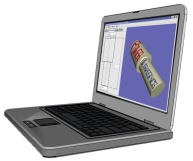A new online ultrasonics components store has just opened at www.UltrasonicsWorld.com. Check their amazing prices for replacement ultrasonics components, fully compatible with the major manufacturers' originals at a fraction of the cost.
- Introduction to power ultrasonics
- Concepts
- Anatomy of an ultrasonic system
- Applications
- Ultrasonic cleaning
- Ultrasonic cutting
- Ultrasonic machining
- Ultrasonic metal-forming
- Ultrasonic metal-welding
- Ultrasonic plastic-welding
- Polymer materials for ultrasonic plastic welding
- Limitations of ultrasonic plastic welding
- Ultrasonic plastic joining methods related to welding
- How ultrasonic welding compares to other plastics joining methods
- Component design for ultrasonic plastic welding
- Controlling the ultrasonic plastic welding process
- Monitoring the ultrasonic plastic welding process
- Design and manufacture of plastic welding horns / sonotrodes
- Ultrasonic sieving
- Ultrasonic sintering
- Sonochemistry
- Advanced / new developments in power ultrasonics

